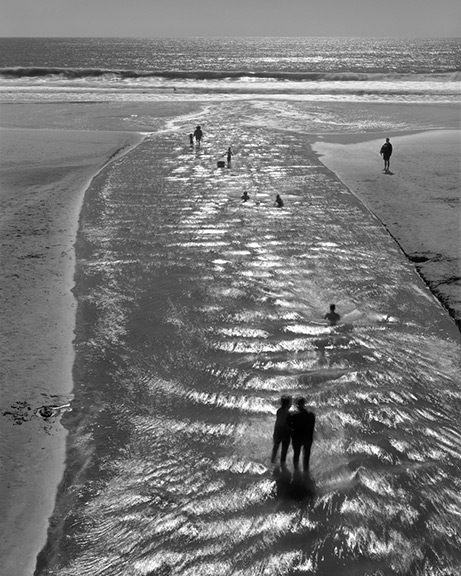Frame…Aperture
The aperture allows the intensity of light to pass into the camera while the shutter acts to regulate the duration of exposure. The exposure (gray) meter suggests a combination of aperture and shutter to place the significant subject brightnesses (tone) above the threshold of the film’s or pixel’s sensitivity.
Aperture also dictates ”Depth Of Field,” or the amount of acceptable sharpness in front and in back of the subject focused. A large aperture like ƒ/2 forms large loose fitting particles of light called ’circles of confusion’ which form a shallow depth of field. A smaller opening or aperture like ƒ/22 generates tight fitting particles of light which produce a great depth of field.

Torrey Pines Beach, Del Mar, California, 2001
A mnemonic method of recalling how depth of field works, is to think of a row of 22 people standing to have their picture made. If you want two people sharp in a picture use ƒ/2, and if you want all 22 people sharp use ƒ/22 for a great depth of field.
It was one of those days you play hooky from your responsibilities. You know you should be elsewhere, getting business done, but the need to work the camera is greater. It was Saturday on a typical brilliant summer afternoon with no clouds, and so much clarity that Mars was visible on the horizon. I know that on certain days of month tidal actions would send the contents of the Penasquitos slough into the Pacific ocean. What I found as I set my tripod on the bridge overlooking the confluence of the slough and ocean, was simply amazing. I used a large format camera, which allowed me to change the plane of focus from the horizon to the standing couple acting as lifeguards over their children playing in the tide.
All Content © Craig Carlson 2012 All Rights Reserved
